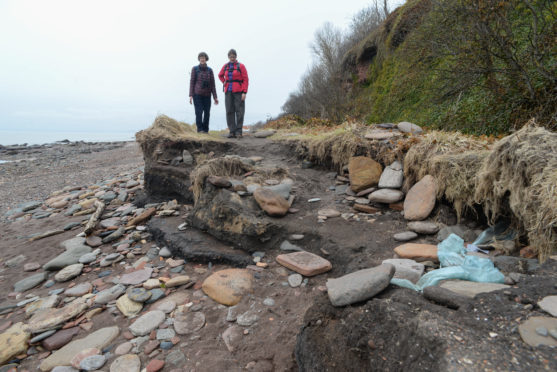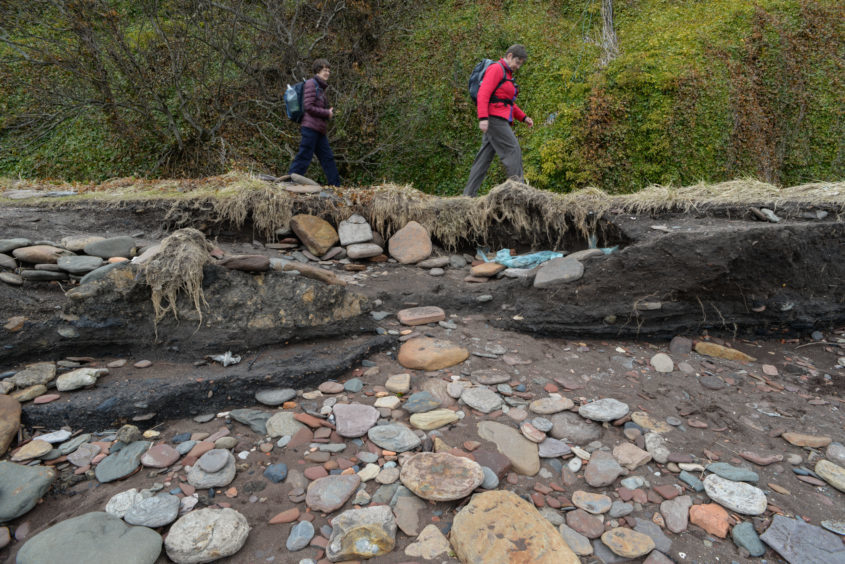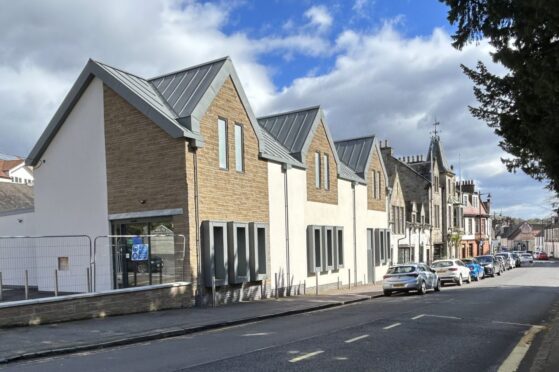Fears for the future of the Fife Coastal Path have been heightened after recent weather took its toll on part of the route.
Significant damage has been done to a section between Dysart and West Wemyss as a result of high spring tides and easterly winds battering the Kingdom’s shoreline.
It has also emerged the foreshore at Pathhead Sands – slightly further west, near Kirkcaldy – has borne the brunt of similar stormy conditions.
The Courier has learned there are real concerns about a number of areas along the region’s coastline which experts believe are particularly vulnerable to the elements.
A recent report carried out by the Scottish Government and Scottish Natural Heritage estimated almost a fifth of Scotland’s coast is at risk of erosion, threatening property and infrastructure worth £400 million. The rate of erosion has doubled since the 1970s.
The report noted the historic Wemyss Caves, the world-famous St Andrews Links golf courses and Ravenscraig Castle in Kirkcaldy are under threat, while Broughty Ferry, Montrose and Barry Buddon were also deemed seriously at risk further up the east coast.
However, research done as part of the Scottish Coastal Heritage at Risk Project (SCHARP) has pinpointed other places along, or near, the 117-mile Coastal Path which are under threat, namely Seafield Tower in Kirkcaldy, Pettycur Harbour near Kinghorn, Newark Castle at St Monans, the salt pans at Crail and St Monans, the Flisk Seabraes submerged forest at Balmerino and the disused Pile Lighthouse marking the entrance to Tayport Harbour.
Experts believe new Coastal Zone Assessment Surveys (CZAS) need to be urgently instigated and targeted at those coastlines or coastal features, with the help of local volunteers.
A spokesperson for the Fife Coast and Countryside Trust confirmed the latest damage recorded to the coastal path, and warned users to be aware of the situation.
“Due to recent high spring tides and easterly winds, the foreshore at Pathhead Sands has been eroded while a section of the Coastal Path between Dysart and West Wemyss has suffered significant damage.
“There are other areas of minor damage, however the section of the Fife Coastal Path between Pathhead Sands, Kirkcaldy and West Wemyss was particularly badly affected.”
Dr Joanna Hambly, a research fellow at the University of St Andrews, said the SCHARP findings showed site conditions can improve or deteriorate depending on environmental, management and meteorological factors but stressed continued monitoring and practical action is needed to prevent further damage.
She said: “You can build coastal defences but you are talking many millions of pounds, and if you start putting in hard coastal defences you tend to move the problem along.
“If you think about the coast between Methil all the way down the Forth, quite a lot of that coast is defended now and what that means is that the energy is deflected into softer areas.
“You can slow the process down – planting marram grass is very effective, allowing salt marshes to develop, and letting natural systems replenish themselves.
“But there’s not really anything we can do about it unfortunately.”
In a bid to improve understanding of the issues facing Scotland’s coast, Dr Hambly has also urged local people to submit their own findings and experiences via www.scharp.co.uk.











